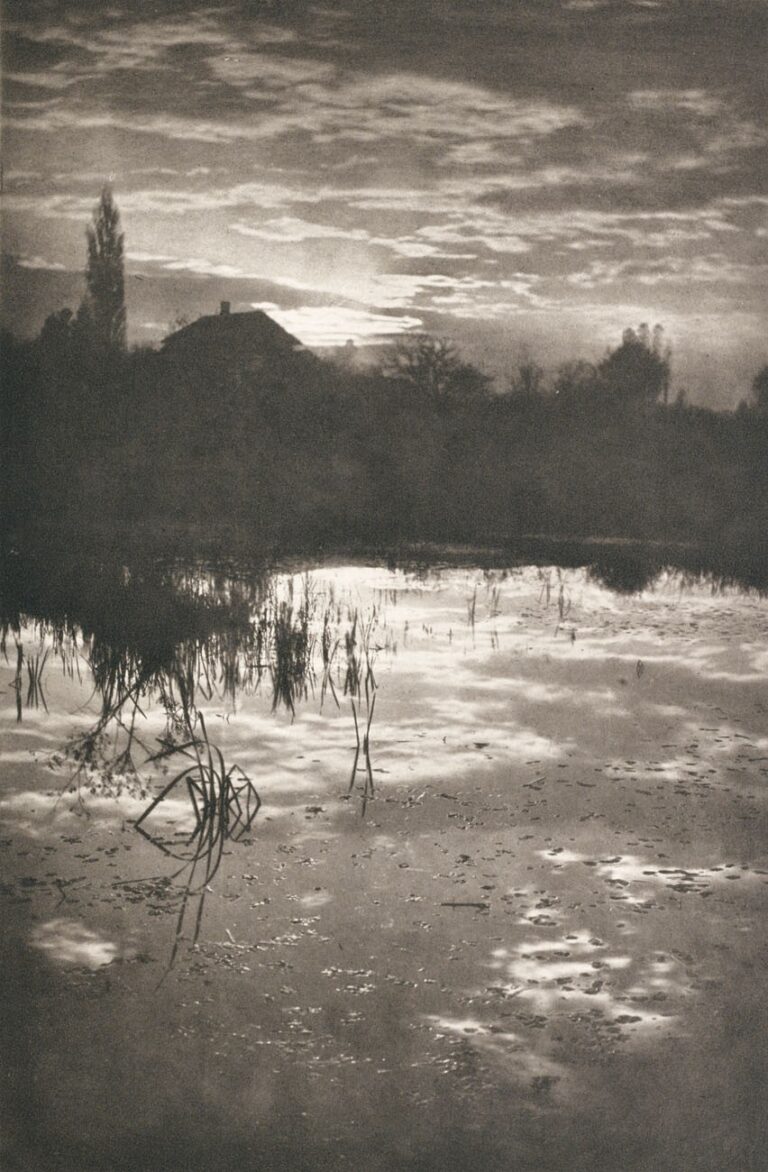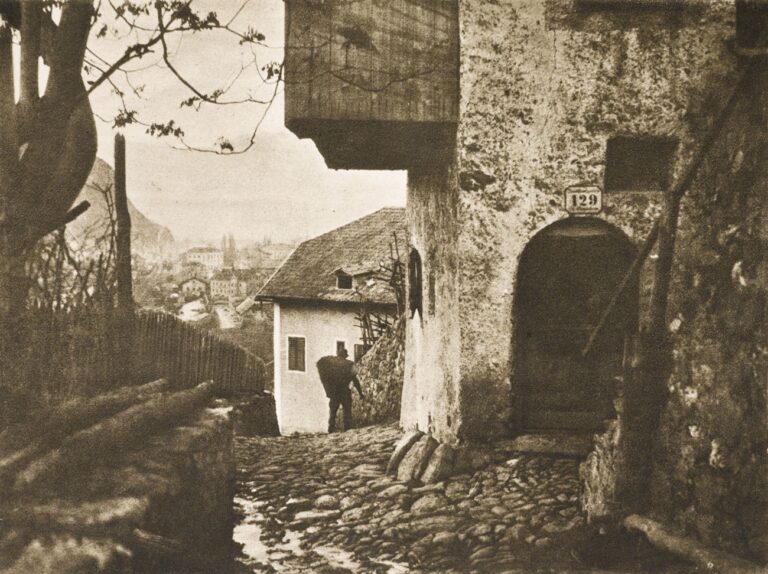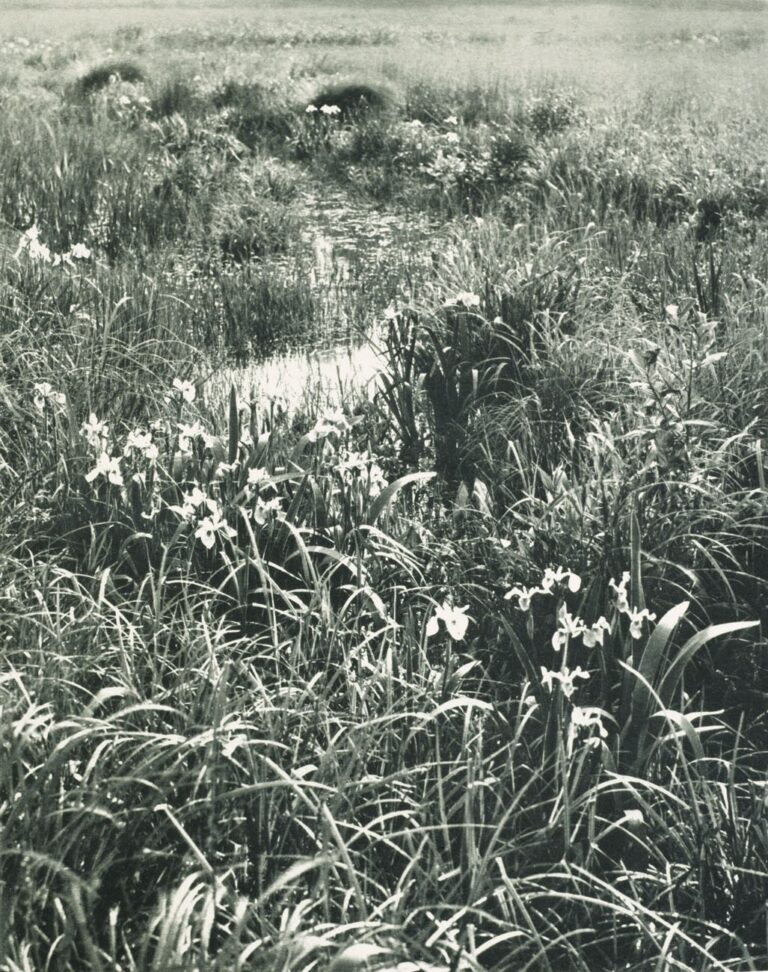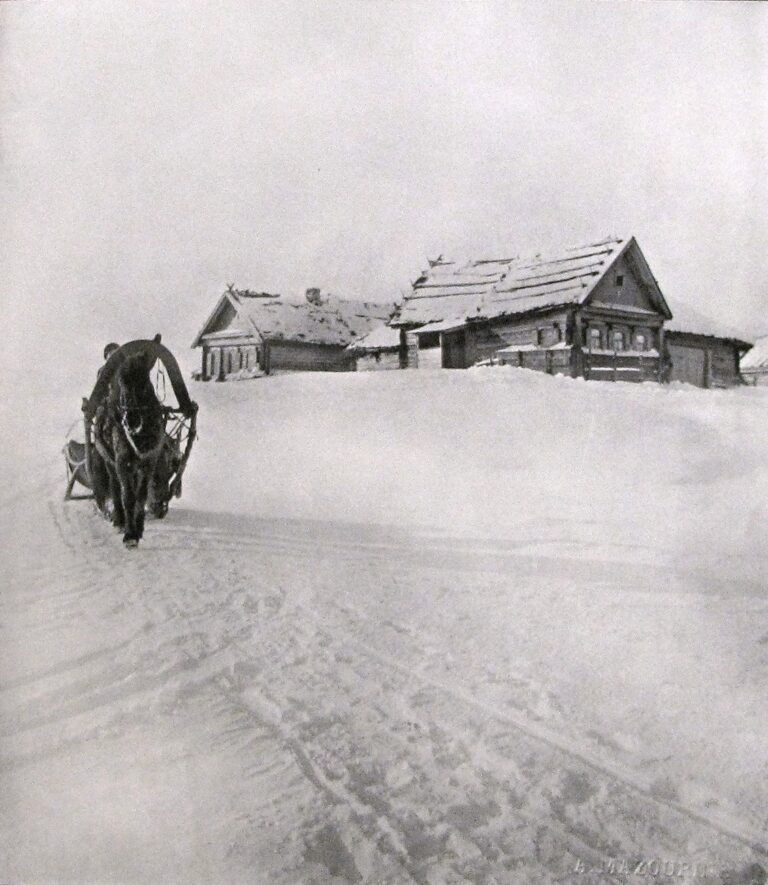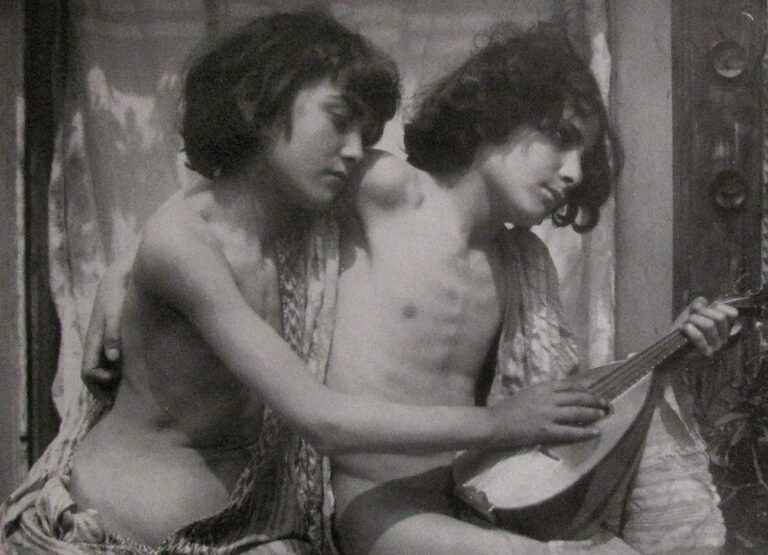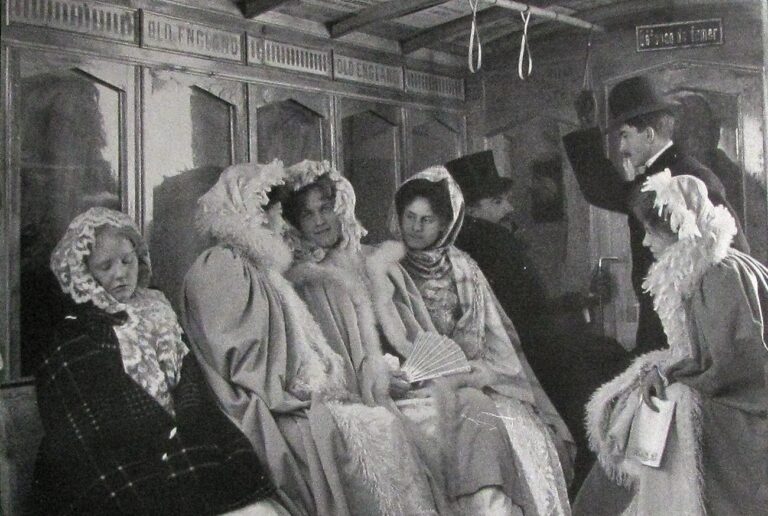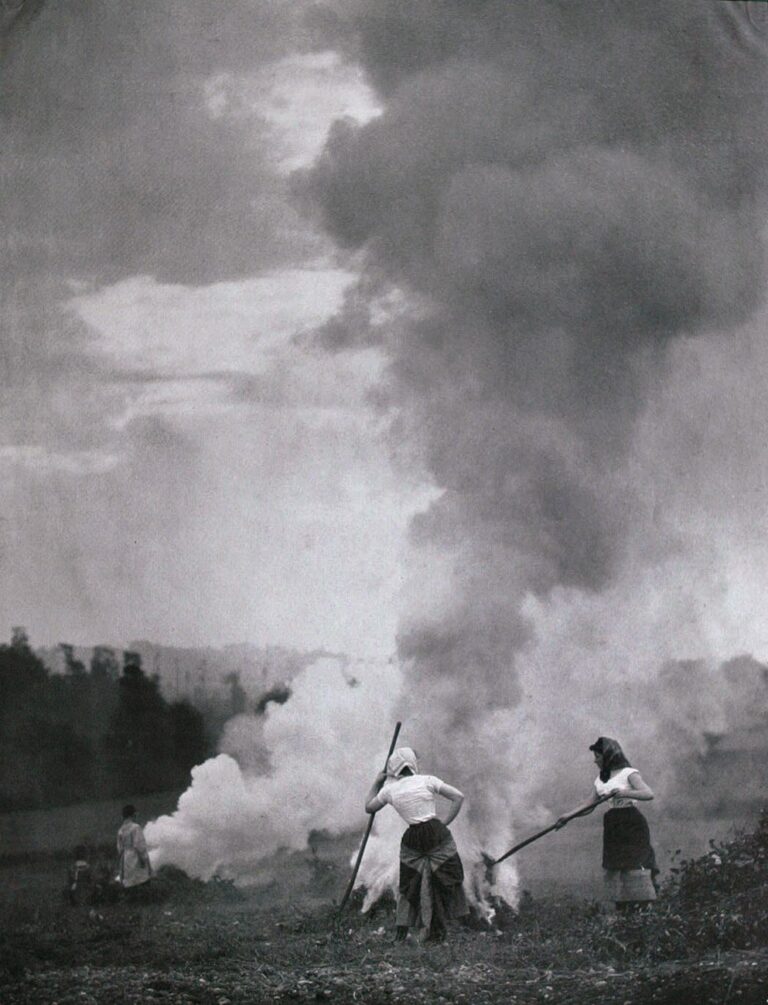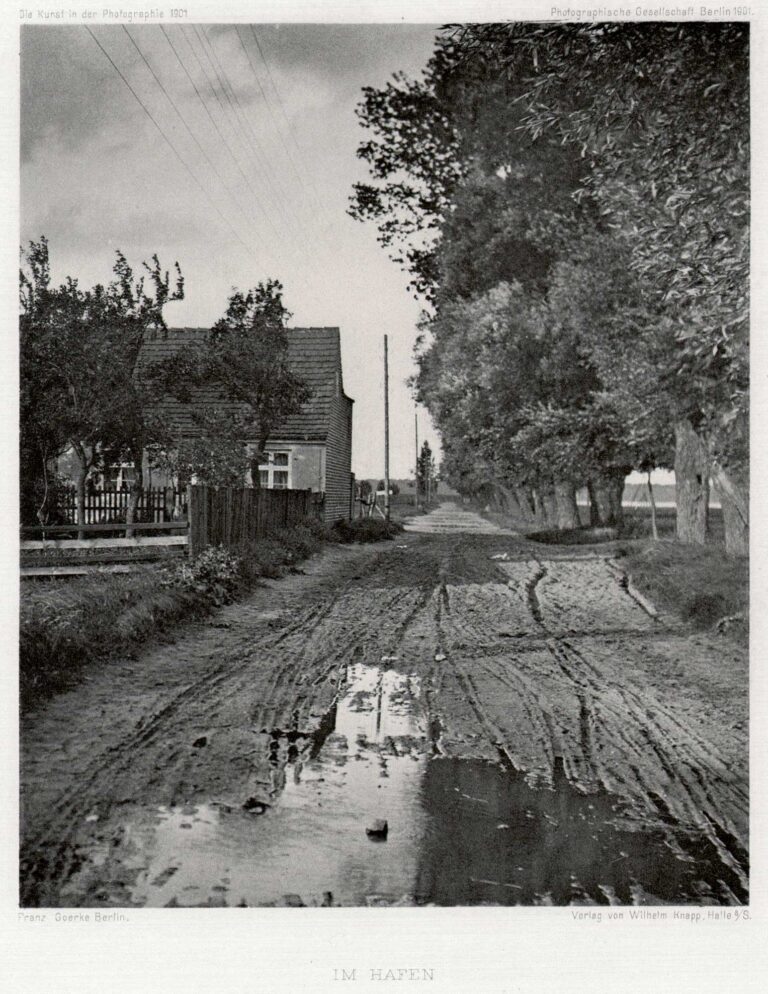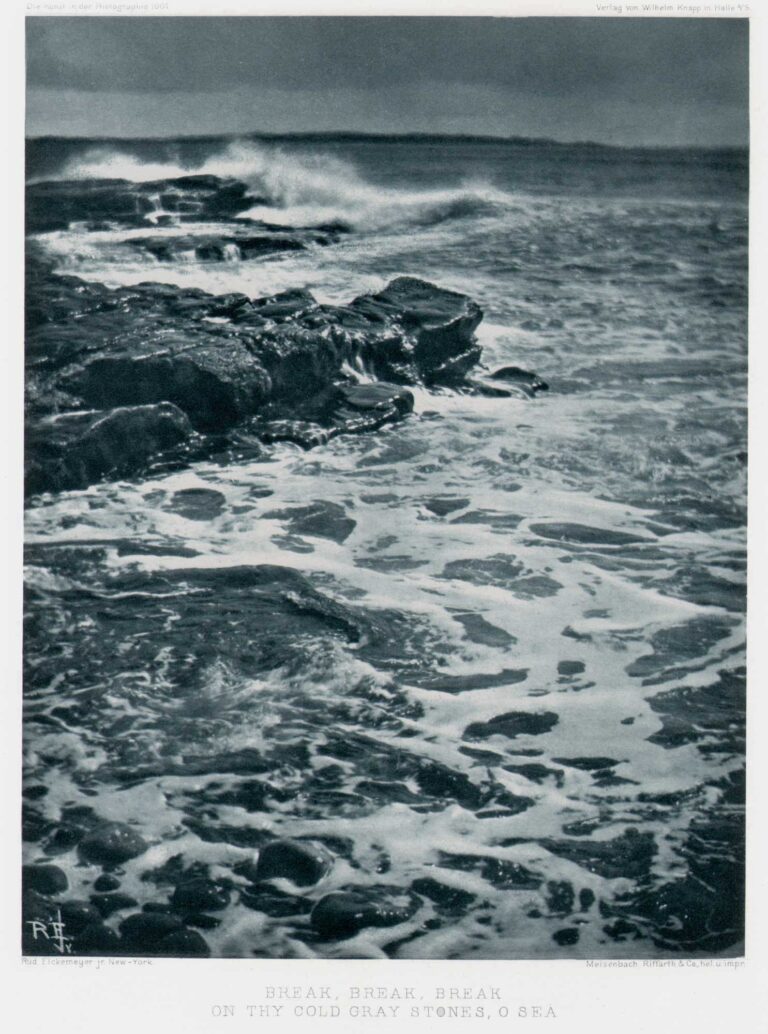
Die Kunst in der Photographie : 1901
Introduction: Die Kunst in der Photographie : 1901
The fifth year 1901 (Fünfter Jahrgang) of this journal ( Halle A. S. : Verlag Von Wilhelm Knapp) featured 36, large-plate, hand-pulled photogravures issued in six art folios. (loose, including letterpress) These issues reflect artistic photographic work for the following:
1-4: Reproduces work from Germany, Austria, France, England, Belgium, Holland, Italy, Russia and Switzerland.
5: Reproduces work by Rudolph Eickemeyer Jr. of New York.
6: Reproduces work of the Photographic Society of Philadelphia.
Writing in the History of Photography, author and collector Rolf H. Krauss summarizes critic Alfred Lichtwark’s introductory article (Zur Einführung) over pages 1-4 of the letterpress:
“…However, the development of amateur photography has progressed rapidly in Germany. There is a fine core of hobby photographers (many ladies among them), and a competent periodical literature. Many individuals, as well as the formal collections of copper engravings at Dresden and Hamburg, have begun to buy photographs. Professional photographers are also beginning to rid themselves of their worst habits, though they can do this only in the largest cities, without endangering their livelihood. “The reform of portrait photography is of the greatest importance for the development of good taste, for photography gets into every house, and rules in the master’s study as well as the lady’s boudoir, and even the maid’s room.” Just because photography is so widespread, it can, as the upholder of art and good taste, have a deeper effect on the culture of a nation than any other artistic activity. Yet, it is not the lower classes that are embraced by it, but the upper layers of society. For that reason, this upper class has a special responsibility.” 1.
For the first time, beginning in 1901, a selection of elaborately mounted autotype (halftone) plates were also included with Die Kunst in der Photographie: 22 were issued.
1. Rolf H. Krauss: Die Kunst in der Photographie, the German Camera Work: Part 2: Texts in Abstract: History of Photography, Volume 11, Number 1, January-March 1987: p. 8
Autotype photographic Art supplements in Die Kunst in der Photographie
Beginning in 1901, the decision by publisher Wilhelm Knapp was made to include a greater variety of printed photographs as individual art supplements in Die Kunst in der Photographie. This would necessitate the economic reality of including plates made by the halftone “Autotypie” process. 1.
Halftone, as defined by Richard Benson in his book The Printed Picture is:
“a printed image in which the continuous tones of a photograph have been converted into a regular grid of high-contrast dots of variable size.” 2.
In Germany, the halftone process that evolved as first patented by Munich’s Georg Meisenbach in 1882 was described by photographic historian Josef Eder as “the first photographic halftone process for book printing which was made commercially practicable.” 3.
The name itself, “Autotypie”, was given by Meisenbach’s business partner Baron Schmädel. 4.
Photographic relief prints by the Autotypie method in Germany were thus referred to as autotypes.
With the passage of time, author Frank Heidtmann in 1984 weighed in on the deficiencies of autotype illustrations versus the vastly superior photogravure plates issued in Der Kunst in der Photographie:
…”the autotype of the period was dreadful by today’s standards”, …”mostly printed on glossy paper, without adequate tonal depth, and full of uninteresting half-tones. Even the best, mounted on monochrome cards, as they often were, to create a special impression, suffer tremendously from any comparison with other reproductive techniques, like heliogravures, for instance. One need only compare the juxtaposition of autotypes and heliogravures in Die Kunst in der Photographie!” 5.
But printing technology was no hindrance to the appreciation of these mounted autotype supplements when they first appeared in 1901. “Each publication was acclaimed first of all because of its luxurious appearance” according to author and collector Kraus. 6.
Photographers and those subscribing to the journal were more concerned with photographic aesthetics than the quality of their printing apparently. Writing in the March, 1902 issue of Photographische Korrespondez, Ludwig Schrank states:
“the artistic part has been enriched by many splendid autotypes, which achieve a certain heightened status by being mounted on colored cards”. 7.
Twenty-two autotype plates were included in the 1901 edition of Die Kunst in der Photographie and the number gradually increased each year. From 1904-1907, 50 autotype plate supplements were included with each collected yearly volume. 8.
In all, 318 autotypes were included with this journal from 1901-1908. 9.
Unlike the photogravure plates issued with Die Kunst in der Photographie, there is no printer (atelier) attribution for the autotype plates listed in the journal. In keeping with an economical strategy for this new printing venture while preserving Georg Meisenbach’s historical role in the Autotypie process, it is possible publisher Wilhelm Knapp may have entrusted Meisenbach, Riffarth & Co. of Berlin (which had done the majority of the 1901 gravure plates) to farm out the halftone relief work elsewhere.
On this, Krauss includes a 1901 advertisement for Meisenbach, Riffarth as an illustration to his research on printing firms involved with Die Kunst in der Photographie. Kraus notes the absence of Autotypie on the ad stating:
“the company had apparently abandoned the autotype”. 10.
Notes:
1. Rolf H. Krauss: Die Kunst in der Photographie, the German Camera Work Part 1: The Publication and its Images: History of Photography, Volume 10, Number 4, October-December 1986 p. 274
2. Richard Benson: The Printed Picture: The Museum of Modern Art: New York: p. 322
3. Josef Maria Eder: History of Photography: Translated by Edward Epstean: Columbia University Press: New York: 1945: p. 631
4. Ibid
5. footnote: Frank Heidemann: Wie das Photo ins Buch kam, der Weg zum photographische illustrierten Buch, Berlin: Verlag Arno Spitz: Berlin: 1984: p. 223: from: Rolf H. Krauss: Die Kunst in der Photographie, the German Camera Work Part 1: The Publication and its Images: History of Photography, Volume 10, Number 4, October-December 1986 p. 274
6. Krauss: p. 274
7. footnote: Ludwig Schrank: Goerke’s Kunst in der Photographie: In: Photographische Korrespondenz: No. 498 (March 1902): p. 123: from: Rolf H. Krauss: Die Kunst in der Photographie, the German Camera Work Part 1: The Publication and its Images: History of Photography, Volume 10, Number 4, October-December 1986 p. 274
8. Krauss: p. 297
9. Ibid
10. Ibid: p. 274




